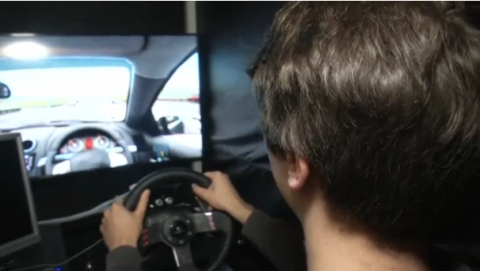
ENGLAND, United Kingdom (Reuters) — Could scent-delivery systems improve your driving or help inform your route planning while behind the wheel?
These are among the questions being asked by University of Sussex researchers testing four commercially available scent delivery systems rigged up to a car driving simulator.
Postdoctoral researcher Emanuela Maggioni told Reuters that vision and sound have long been the dominant modalities for drivers, but that our sense of smell could have a future role in the driving experience.
She said: “When driving you are completely focused on that task, but at the same time you’re maybe listening to the radio or a navigator, so you are are already in a fully immersed environment. With smell we are introducing another modality to deliver information that is secondary to the driving task, but still important.”
Maggioni says scent could be delivered automatically, in conjunction with the car’s on-board computer, to alert drivers to a variety of points of interest or alarm.
“We could deliver smell when you are approaching a point of interest or to inform you that you are low in gas or have engine problems or need to slow down. The sense of smell could be added to other information coming from other modalities,” said Maggioni.
Along with Informatics PhD student Dmitrijs Dmitrenko and software developer Robert Cobden, Maggioni has been testing volunteers with a range of smells pumped into the air near the simulator’s steering wheel.
The delivery system is composed of a series of valves connecting liquid scent pumped through large canisters to a 3D-printed nozzle, via cables. The sensor automatically detects the distance between nozzle and user.
“We are exploring arousing and soothing smells,” said Dmitrenko. “Arousing smells are, for instance, lemon and peppermint, while soothing smells include lavender, vanilla, and rose. We are trying to map these smells to different informative messages.”
Volunteers have been asked to match what they consider appropriate smells to various driving scenarios.
“We’ve noticed that the level of how arousing the smell is often matches the importance of the message. The more important the message is the more arousing smell users tend to select,” said Dmitrenko.
The team is halfway through a one-year proof of concept European Research Council (ERC) project entitled Owidgets.
Dmitrenko believes smell could help drivers suffering from visual or aural sensory overload.
Currently the researchers are investigating the optimal physical and perceptual parameters to integrate the scent-delivery device in an automotive context. They hope to eventually test a device in a real car on the road.
They think their concept could also be of interest in various other applications, such as gaming or text message delivery.







